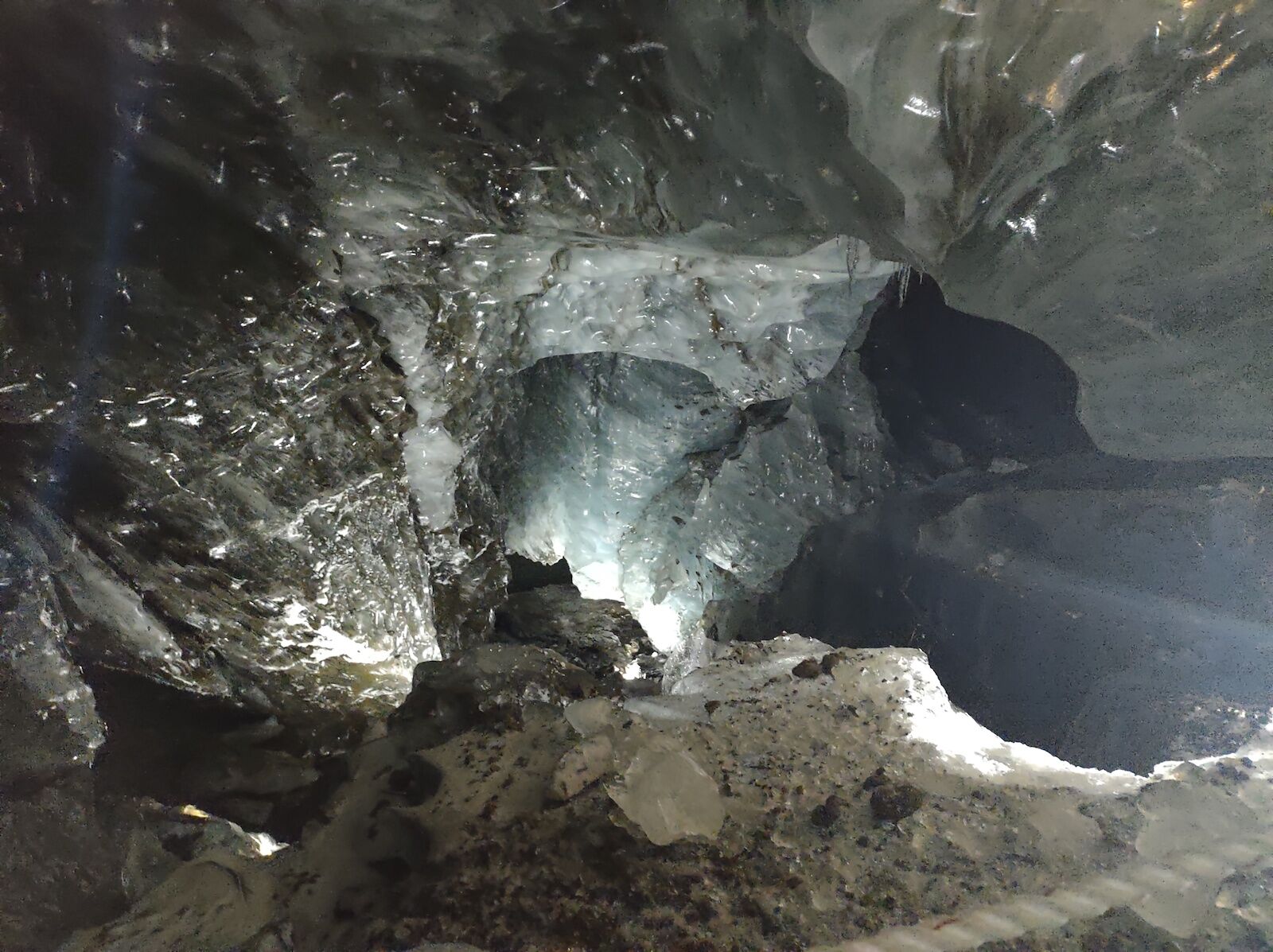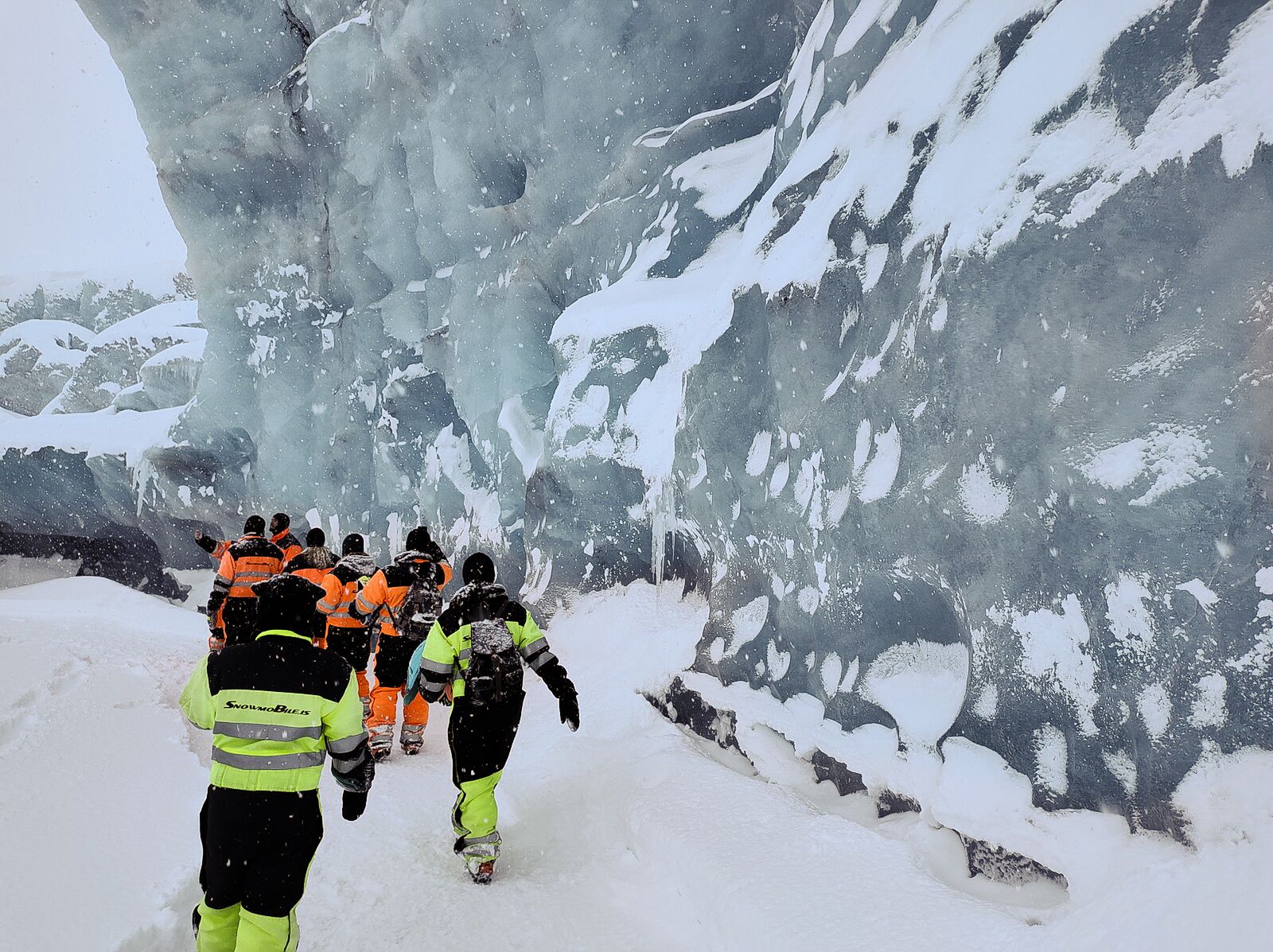Standing in the middle of a white void, it’s impossible — at least to my untrained eye — to tell north from south, east from west. There’s no obvious horizon line and all the curves and hills we’re told will be along our route are completely invisible. It turns out Langjökull, known locally as “The White Glacier,” lives up to its name. The view in front of us is as blank as a fresh sheet of paper.
I had just enough time to get settled onto the back of my first-ever snowmobile ride when it suddenly accelerated forward, headed blindly into the white vacuum of space. I was off to visit a newly discovered natural wonder: Langjökull Cave, one of the biggest and most captivating Iceland ice caves. Unlike solution (or rock) caves, ice caves are temporary, at the mercy of temperatures and glacial melt. They may sit mostly unchanged for years and years — or they could disappear come May, never to return again.



